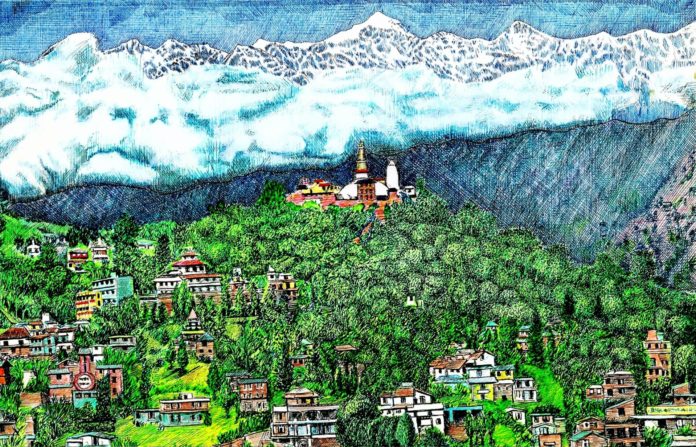All of us know how rich Nepal is in regards to myths and urban legends. Some are a little too close for comfort, some are a little bit ridiculous, and some are absolutely fascinating. You must have grown up hearing a lot of mythological stories. These myths and their related monuments are what make Kathmandu such a fascinating and interesting place to live. Let’s take a look at some of the lesser-known myths about Kathmandu.
Also read: Mythical creatures in Nepal and the myths behind them
1. The Legend Of Kathmandu Valley
Most of us probably heard this in our social studies class but for those who aren’t familiar, back in the day, Kathmandu Valley was a lake surrounded by hills. This was said to be the most beautiful lake in the world and the water apparently sparkled like liquid gold during sunset and glittered like diamonds once the stars were out. Many accomplished sages would come from various corners of the earth just to meditate here.
Once, a Bodhisattva named Vipashvi was meditating when a bright Lotus appeared in front of him. He understood what his purpose was and dispersed the seeds of the Lotus in the lake, which took root at the bottom. Over the next decades, this Lotus was hailed as one of the most beautiful sights to see. Soon, the Bodhisattva Manjushree became aware of it and came to have a look himself.
Once he paid his respects, he realized people could have better access to the divine flower if all these mountains weren’t in the way. So he took it upon himself to cut them with his sword and drained the lake and the Lotus became the Swayambhu Stupa. Thus creating the Kathmandu valley, with very fertile soil for farming, and the one we all know and love.
2. The Toothache Tree
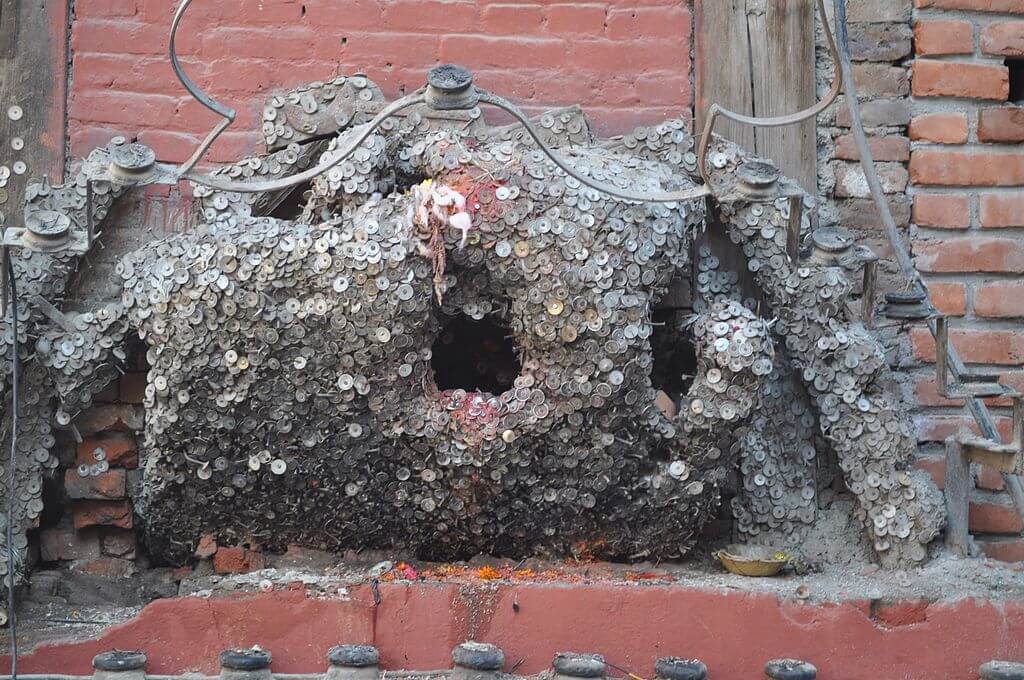
Do you get frequent teeth pains? Well, there is a way you can ask for help from the gods directly. The Toothache Tree is hard to spot if you don’t know where to look, and if you did see it by accident somehow you must have been very confused as to what exactly you were looking at. It’s just a stump at the corner of the road with a bunch of coins nailed to it, but all you can see now is a lump of coins. The tree stump is said to have been cut from a tree with special properties known as Bangemudha. It is said that the coins nailed here are an offering to Vaishya Dev, the Newar god of the toothache who will heal your teeth if you please him. No one can tell for sure if it actually works but that has never stopped people from trying.
3. Kaal Bhairav
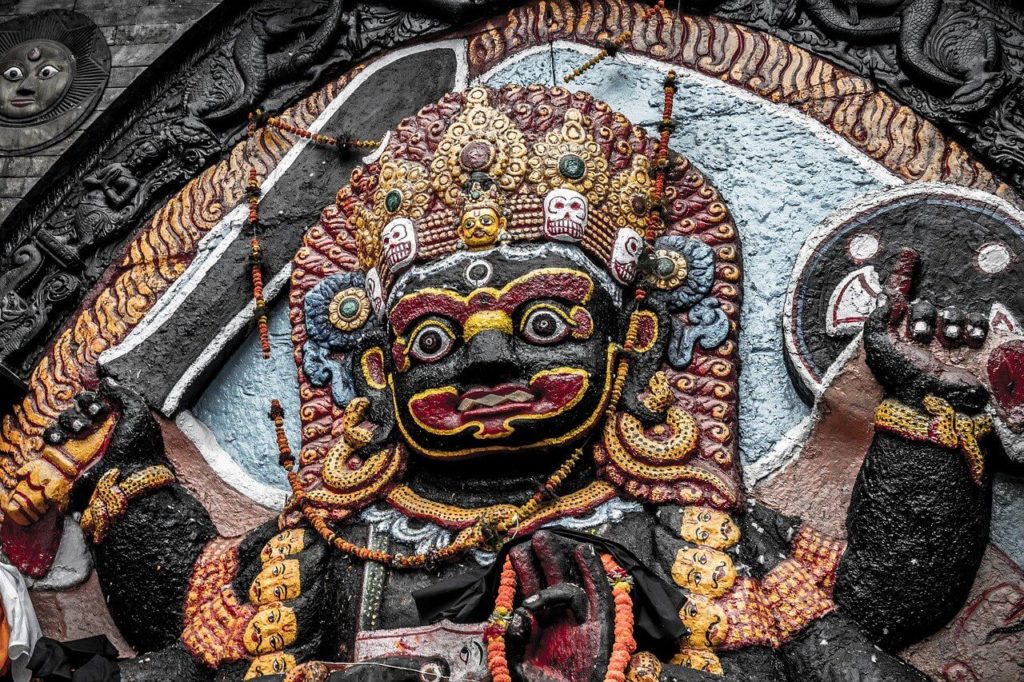
The Basantapur area of Kathmandu alone is a monument of many different myths, Kaal Bhairav being a major one of them. With a terrifying visage and 12 feet tall body, this particular form of Lord Shiva is a fierce one. This statue of Kaal Bhairav is said to have been prone to coming to life and passing judgment on people back in the day. It is said that when the court of law was not properly established, criminals would be brought in front of the Bhairav statue and be made to give their testimonials. If they lied, Kaal Bhairav would pass his judgment on them and they would spew blood and die. Needless to say, crime was very low during those times.
4. The Palm Print At Asura Cave
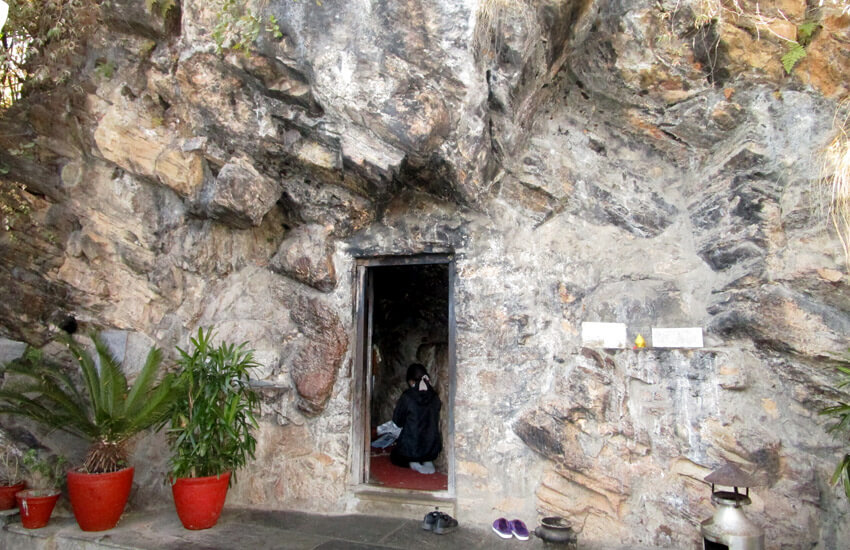
Most of us know Pharping and many must have gone there for a day hike or for a picnic. But few know about the legend of Guru Padmasambhava and his palm print at the Asura Cave. If you go visit the Ngagyur Nyingmapa Rigzin Phodrang Monastery, you will find a small cave opening. It is believed that Guru Padmasambhava, the Indian teacher who introduced Buddhism in Tibet meditated in this cave. Once he completed his meditation, he wanted to test the power of his meditation so he pressed his hand next to the opening of the cave. Hence, his hand was imprinted on the stone. You can actually try pressing your hand on top of the palm print and find yourself freaking out over how your hand fits snugly into the indented print. Today, many devotees come to visit the cave and make offerings and prayers. Many Buddhist retreats are also held here by the monastery.
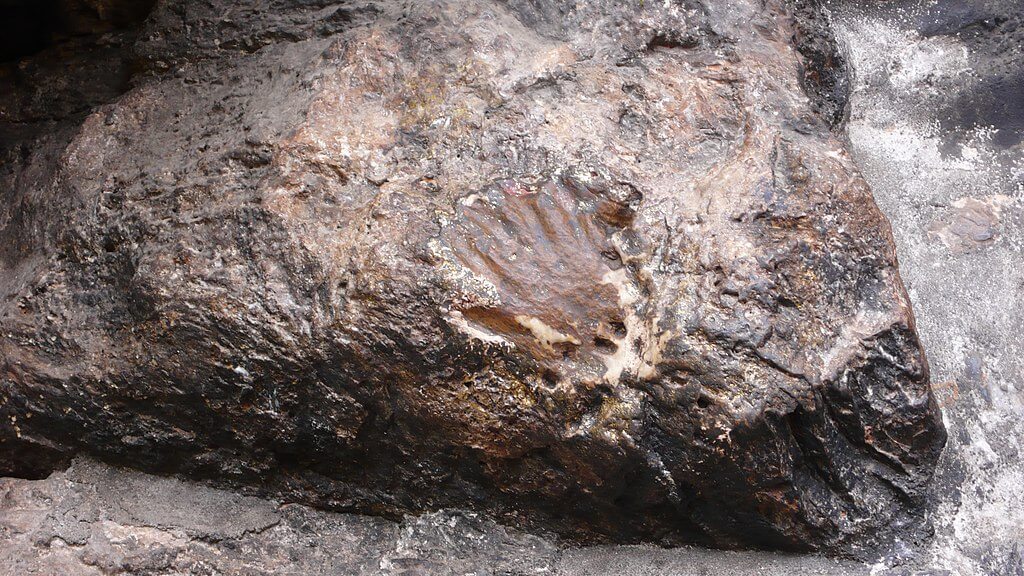
5. Agnishala: The Fire That Never Goes Out
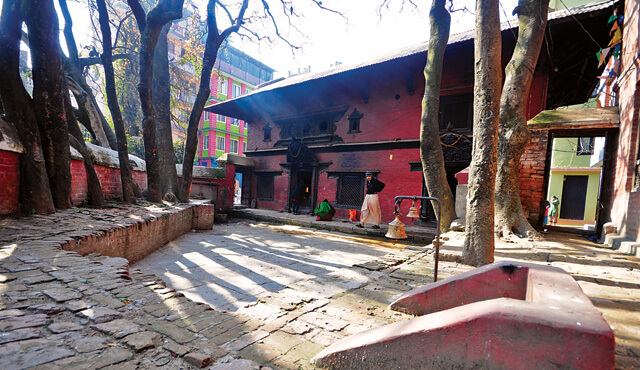
This one sounds like the work of a fantasy writer but Agnishala is an actual temple in Patan where the fire is eternally burning. It is said that the temple is 4000 years old and so is the tree known as Barun Briksha which lies within the temple premises. It is believed that if the practice of maintaining the fire is discontinued, the world would come to an end just as it would if the sun would stop shining. The temple is looked after by high priests from the Rajopadhya clan. People who want to get rid of their astrological bad luck (graha dasha) visit this place to have the priests perform rituals in their name.
6. Mahankal Temple
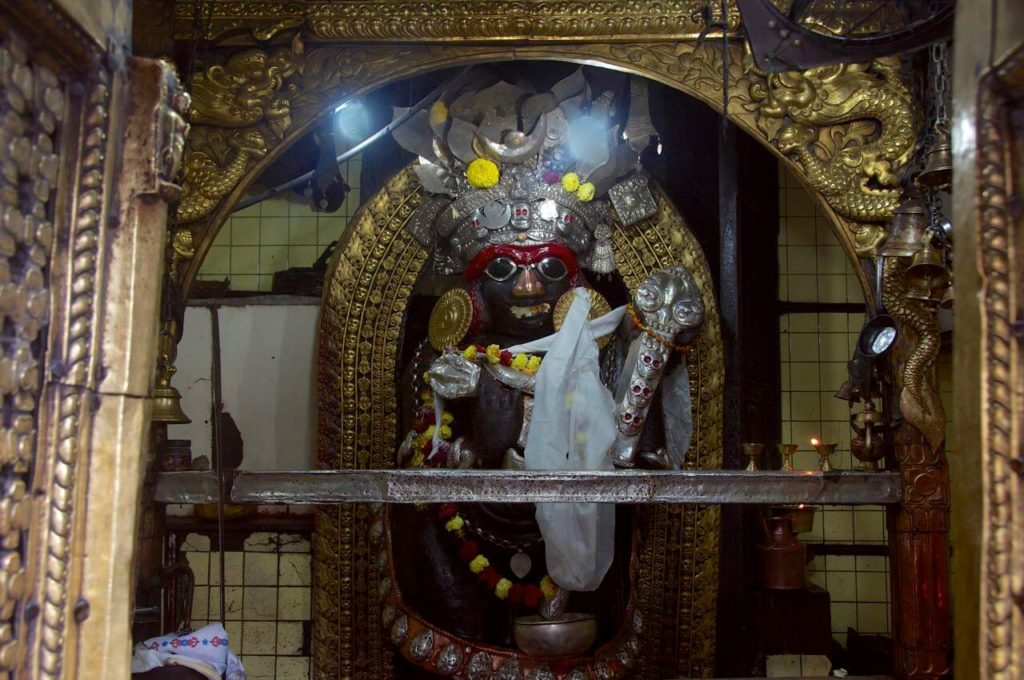
Mahankal Temple is located on the opposite side of Bir Hospital in Kathmandu. While the temple is relatively small, it does have a fascinating history. According to legend, one day a tantric saw Lord Mahankal flying with his own eyes. Seeking help from the king of Kantipur, he constructed a temple for Lord Mahankal to stay there permanently but Lord Mahankal refused. This is where the stories split: one story says that after Lord Mahankal refused he was forcefully bound to the temple by the tantric. The other version of the story says that while he refused at first, he did compromise to visit every Saturday to give his blessings to devotees. The second one seems to be the popular version.
7. Taleju Bhawani
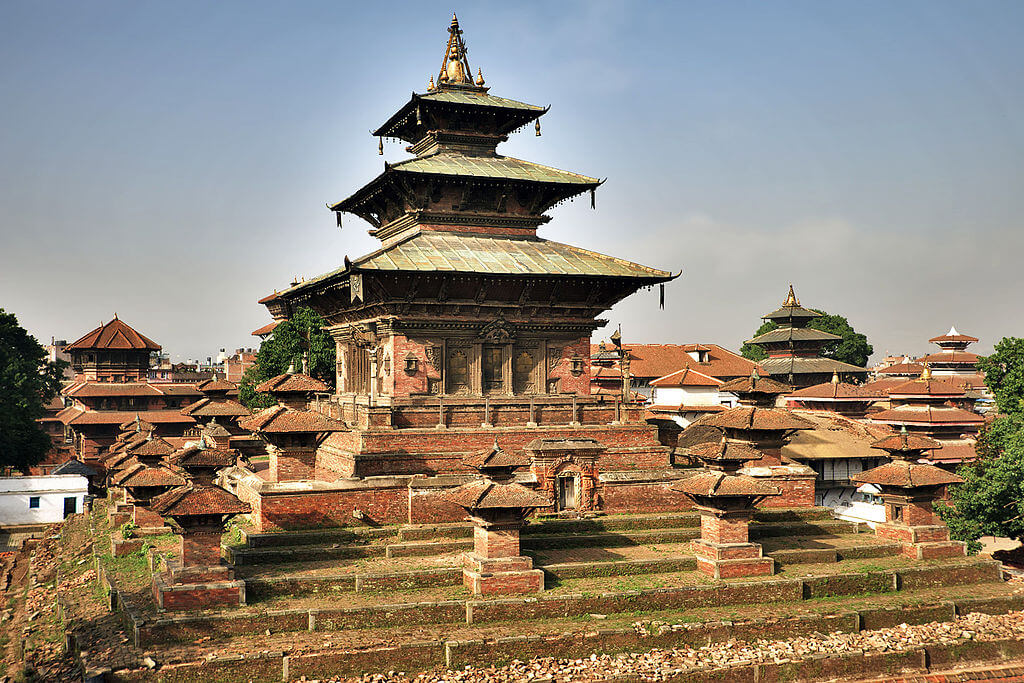
Taleju Bhawani temple is famous for only being open for one day in a year, which is on the 9th day of Dashain. The lines are ridiculously long to visit the temple on this day. Legend says that back when Goddess Taleju would take a human-form the last Malla King, King Jayaprakash Malla would visit her at night to play tripasa, a type of gambling board game. This was a secret between the two. Once again stories breach here; one version states that they were caught by the king’s wife one night, while the other states that the goddess could sense that the king was starting to have impure thoughts about her. Regardless, she left in a fit of anger. After the king begged for forgiveness, she told him that if he wanted to see her again and get her protection he would have to identify her reincarnation from a group of young girls from the Shakya clan.
8. Kumari: The Living Goddess
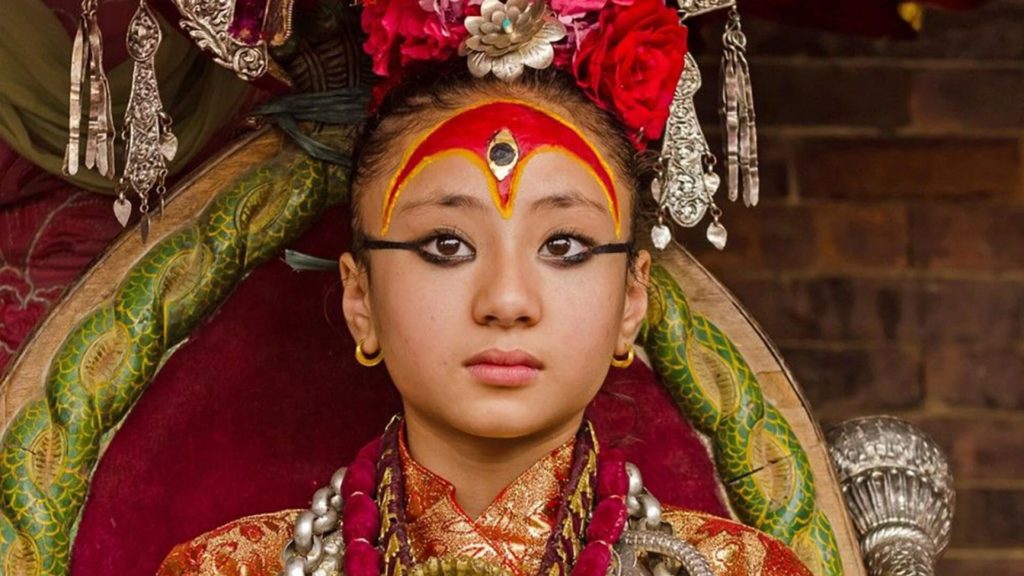
Adding on the story above, the tradition of selecting a Kumari was how it started. Kumari is the name given to Goddess Taleju’s reincarnations in a little Shakya girl. This tradition of a little girl who is supposedly possessed by Taleju’s spirit being worshipped still lives on to this day. The girl must meet an extensive list of criteria and is removed immediately if she no longer meets them. The tradition of Kumari has faced some criticism in recent years and is even called ‘creepy’, but this is mostly a vocal minority and the selection of the living goddess continues without a hitch.
9. Rato Machindranath

Rato Machindranath Jatra is one of Kathmandu’s most popular festivals. This is partly due to how closely the fate of Rato Machindranath’s chariot seems to be aligned with the country’s. Every time something has happened to the chariot, coincidentally something terrible has occurred in the country. Whether it be the royal massacre, droughts, floods, civil war, or whatnot, they were all hinted at by the malfunction that occurred within the chariot such as the chariot falling down. If something happens to a well-made and strong chariot; an atmosphere of devastation spreads amongst the country until disaster strikes.



